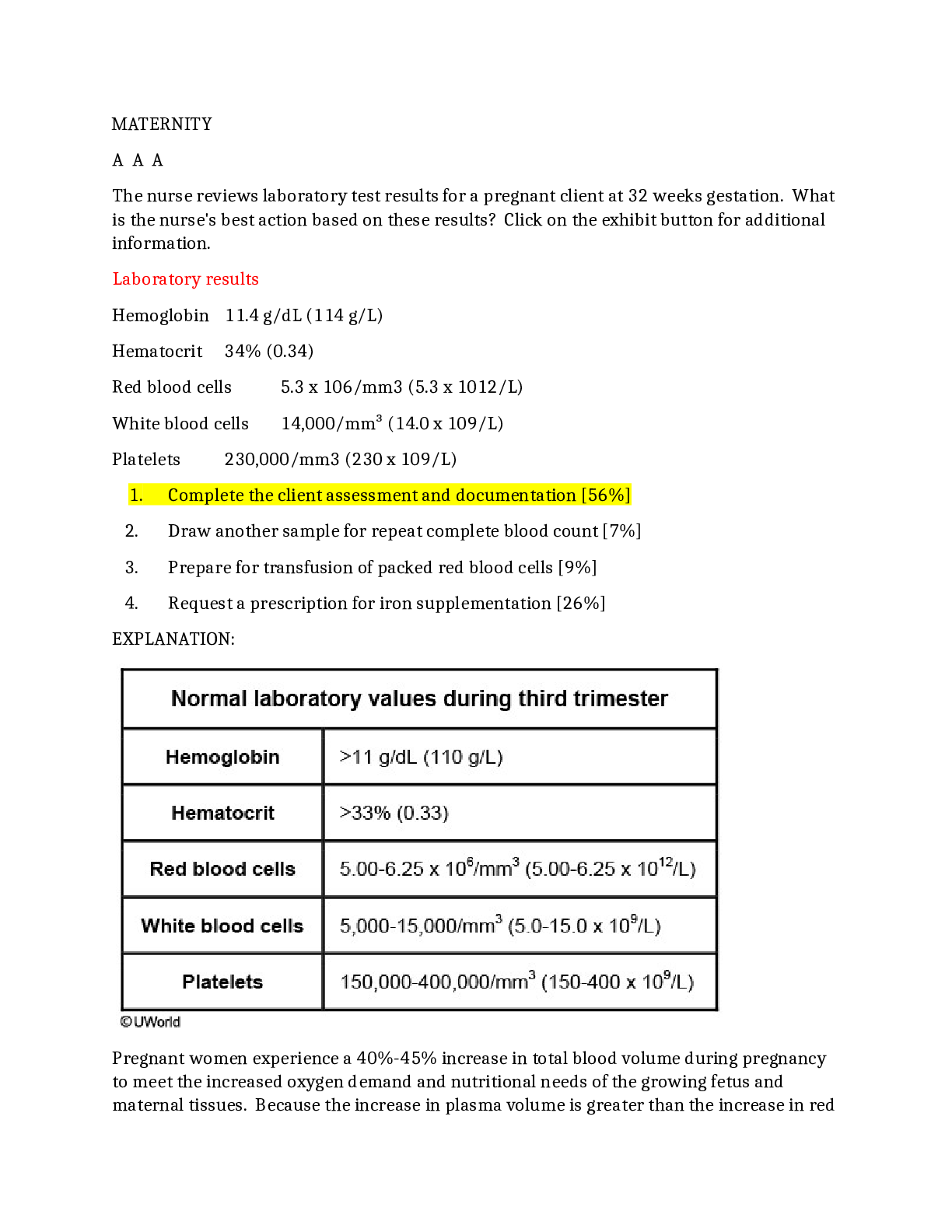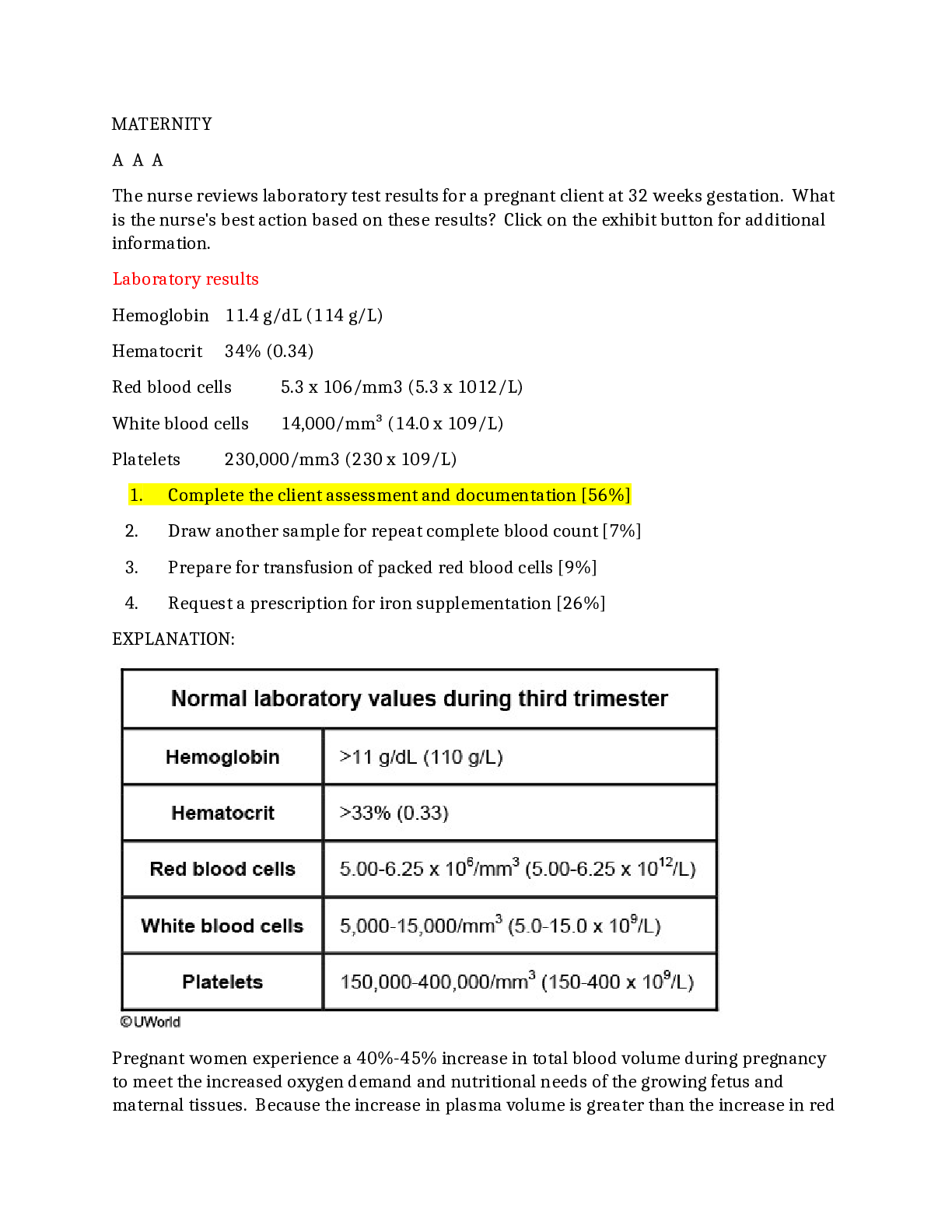Uworld MATERNITY
Course
Project Management
Subject
Chemistry
Category
Questions and Answers
Pages
96
Uploaded By
ATIPROS
Preview 5 out of 96 Pages


Download all 96 pages for $ 14.50
Reviews (0)
$14.50
